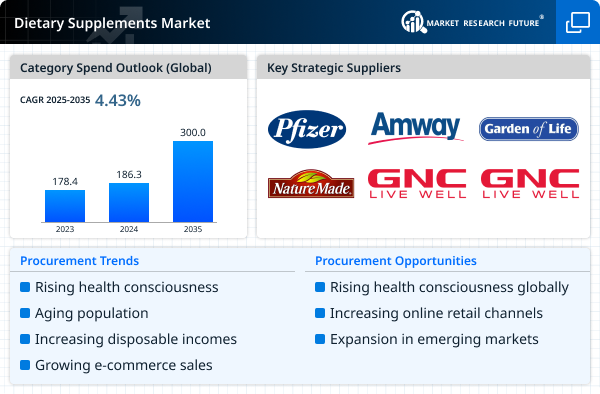Top Industry Leaders in the Caprylic/Capric Triglycerides Market

The caprylic/capric triglycerides market is a significant segment within the specialty chemicals and personal care industries, driven by the diverse applications of these triglycerides in skincare, cosmetics, and pharmaceutical formulations. Key players in this market employ various strategies to establish and strengthen their positions, with factors such as product innovation, sustainability practices, and market expansion influencing the overall competitive landscape.
Key Players:
Croda International plc (UK)
Oleon NV (Belgium)
Ecogreen Oleochemicals (Singapore)
Peter Cremer North America (US)
IOI Oleo GmbH (Germany)
KLK Oleo (Malaysia)
Oxiteno (Brazil)
BERG SCHMIDT GmbH & CO. (Germany)
Emery Oleochemicals (Malaysia)
Sternchemie GmbH & Co KG (Germany)
Strategies Adopted:
To navigate the competitive landscape, key players in the caprylic/capric triglycerides market deploy strategic initiatives. Research and development (R&D) activities are central, with companies investing in the development of novel production methods and formulations to enhance the functionality and versatility of caprylic/capric triglycerides. Strategic partnerships with cosmetic brands, pharmaceutical companies, and other end-users enable players to integrate their products into a wide range of applications, expanding market reach. Moreover, marketing efforts focus on promoting the natural origin, stability, and skin-friendly properties of caprylic/capric triglycerides to attract formulation professionals and manufacturers.
Market Share Analysis:
Several factors contribute to the analysis of market share within the caprylic/capric triglycerides market. Research and development capabilities are crucial, as companies that continually innovate and introduce high-quality triglyceride formulations gain a competitive advantage. Global distribution networks ensure market penetration and accessibility to a diverse customer base, including cosmetic formulators, pharmaceutical manufacturers, and other industrial users. Adherence to regulatory standards, quality control measures, and certifications such as ISO 9001 and GMP (Good Manufacturing Practice) play a pivotal role in ensuring caprylic/capric triglycerides meet industry requirements. Brand reputation, customer relationships, and pricing strategies are also key factors influencing a company's market share within this competitive landscape.
News & Emerging Companies:
The caprylic/capric triglycerides market has witnessed the emergence of innovative startups and specialized companies focusing on unique triglyceride formulations or applications. These emerging companies often introduce triglyceride products with enhanced functional properties or tailored for specific industries, such as natural cosmetics or pharmaceuticals. Industry news suggests a growing trend of collaborations between triglyceride manufacturers and green beauty brands to develop customized solutions for clean and sustainable beauty products. Additionally, mergers and acquisitions contribute to the evolving competitive landscape as companies seek to enhance their product portfolios and market presence.
Industry Trends:
Recent industry news highlights a trend of increased investment in sustainable sourcing and production practices for caprylic/capric triglycerides. Companies are responding to consumer demands for environmentally responsible products by investing in responsible palm oil sourcing, or exploring alternative feedstocks. Moreover, advancements in processing technologies, including innovations in enzymatic esterification, are gaining prominence, allowing for the production of triglycerides with improved stability and sensory attributes. The industry is also witnessing investments in digitalization and automation to improve manufacturing processes and ensure consistent product quality.
Competitive Scenario:
The caprylic/capric triglycerides market is characterized by robust competition among key players aiming to capture a significant share of the growing market. Companies compete based on factors such as product quality, innovation, and the ability to meet the diverse needs of cosmetic, pharmaceutical, and industrial manufacturers. The market's dynamic nature requires players to stay at the forefront of technological advancements, regulatory changes, and evolving consumer preferences. As the demand for clean-label and sustainable ingredients rises, caprylic/capric triglyceride manufacturers must navigate challenges related to raw material sourcing and demonstrate their commitment to ethical and environmentally friendly practices.
Recent Development
The caprylic/capric triglycerides market was the announcement by Croda International Plc regarding the acquisition of a leading specialty chemicals company specializing in triglyceride-based formulations. This strategic move aimed to strengthen Croda's position in the market and broaden its product portfolio to meet the evolving needs of customers in the personal care and pharmaceutical sectors. Additionally, BASF SE unveiled a sustainability initiative focused on responsible sourcing of palm oil, a key raw material for caprylic/capric triglycerides. These developments underscore the industry's commitment to growth, innovation, and sustainability in response to the dynamic landscape of the caprylic/capric triglycerides market.


